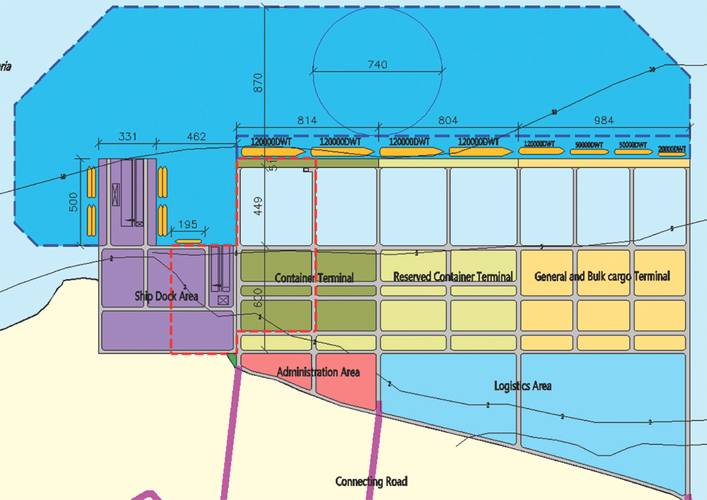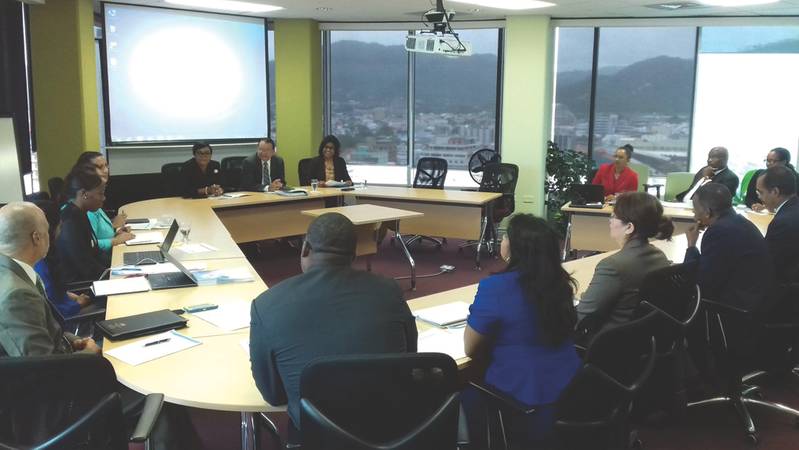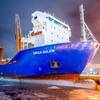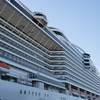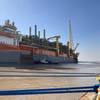Spurred by Panama Canal Expansion and U.S. LNG Export, $500 Million Shipyard Projects Starts
As Trinidad and Tobago seeks to diversify its economy, it is banking on a massive shipyard construction project as the centerpiece of a maritime industry and economic revival. A Trinidad and Tobago Parliamentary debate earlier this year centered on the Motion, ‘Increase of Loan Ceiling under The Development Loans Act.’ One diversification strategy involves the country’s thrust into the development and expansion of the maritime sectors, particularly Shipbuilding and Repair.
The Trinidad and Tobago Shipbuilding and Repair Cluster has long held the view that government financial investment is central to a country’s successful economic diversification, as was clearly stated in its ‘Vision’ Booklet, first published by Cluster Stakeholders, when the now Prime Minister was heading the Ministry of Trade & Industry in 2008.
The Trinidad and Tobago Shipbuilding and Repair Cluster Stakeholders were pleased to hear the Minister of Finance that the motion tabled will assist the current government administration to honor contractual agreements already entered, as one of these agreements was the Design, Build and Finance of a $500 million shipyard development project at La Brea, South Western Trinidad which had been proposed by the Shipbuilding and Repair Development Company of Trinidad and Tobago Limited (SRDC), the commercial entity of the Cluster, since September 2010.
This large-scale industrial project, which has already been endorsed by both community residents and environmental activists alike, will permit the country additional opportunities to dry dock large Panamax oceangoing ships, in a graving dock. This included the creation of a number of alongside repair berths to handle up to Aframax sized tanker ships (80,000-120,000 DWT) a tanker class which frequents the southernmost regions, including the Caribbean Sea and are mainly utilized in the ocean transportation of crude oil between refineries, located in both The Bolivarian Republic of Venezuela and the U.S.
The Bolivarian Republic of Venezuela cannot be ignored, as it not only has one of the larger, more established maritime Universities in the region, La Universidad Nacional Experimental Marítima del Caribe (UMC), it also has a large fleet of Aframax tankers for crude oil exports. In 2014 The Bolivarian Republic of Venezuela was also the fourth largest supplier of imported crude oil to the United States, behind Canada, Saudi Arabia and Mexico, according to the United States Energy Information Administration (EIA). In December 2015, the SRDC with the assistance of its Stakeholders facilitated an inward visit by a Maritime Graduate from the UMC. This was the first visitor from The Bolivarian Republic of Venezuela and has also followed similarly inward sponsored visits by maritime related personnel from the United Kingdom in 2009 and the People’s Republic of China in 2012.
With the construction and commencement of Shipyard operations at the new La Brea Shipyard site, expected to be completed in 2018 by China Harbor Engineering Company Limited (CHEC) and project financing arranged by the Trinidad and Tobago government and the Export-Import Bank of China, this also represents a tremendous opportunity for Trinidad and Tobago to earn large amounts of foreign exchange. In fact, the SRDC has envisaged that this Shipyard may have to operate 24 hours-a-day, seven days a week, similar to the Republic of Singapore, undertaking both scheduled and emergency repairs of ocean-going ships, much in the same manner in which it has become a global maritime leader from its smaller island mass. The Republic of Singapore is calculated to be one-fifth the size of Trinidad and Tobago and where a ship movement (arrivals and departures) occurs at a rate of one ship every three minutes, approximately.
This industrial-scale shipyard operation at La Brea (not to be confused with the smaller-sized marinas in Chaguaramas, North-West Trinidad) will also demand a huge labor force, both unskilled labor and skilled technicians, from various nationalities.
Shipbuilding and repair is a globally competitive business undertaking, which requires astute management and a dedicated labor force. With this in mind, the La Brea Shipyard intends to operate using similar labor practices found in many established Shipyards in North America, Europe and in the Middle East, where job opportunities are first advertised locally. Unfilled positions will then be advertised internationally. The Bolivarian Republic of Venezuela can possibly be one closely managed source for qualified employees, many of whom have gained decades of experience from their petroleum industry, bearing in mind, the close geographical position to Trinidad and their large population of 33 million inhabitants.
The announcement of the shipyard and the economic diversification of Trinidad is considered timely given the recent lifting of the 40-year crude oil ban by the U.S. Congress, together with the commissioning of the Cheniere Energy Sabine Pass Liquefied Natural Gas (LNG) Terminal, strategically located on the Gulf Coast of the U.S.
A recent study undertaken by the United States Government Accountability Office (GAO) and the prediction made by the Department of Energy (DOE) points to the fact that in the next few years, the U.S. is expected to change from a net importer of natural gas to a net exporter, with the completion of five large-scale United States liquefaction facilities – necessary for the conversion of natural gas to LNG. This change will require at least 100 new LNG carrier ships, once the five LNG liquefaction facilities are fully operational by their projected start-up date of 2020.
The La Brea Shipyard project can directly benefit from an increase in ship repairs required by these additional LNG carriers, moving their cargoes from the Gulf Coast, including Sabine Pass and Corpus Christi, Texas through the expanded Panama Canal en-route to Asian markets, such as Japan, Taiwan and the People’s Republic of China. It is anticipated that the commissioning of the third lock in Panama in May 2016, will make LNG ship voyages to Asia, some 8,600 km shorter and will be able to accommodate 92% of the world’s LNG fleet or some 538 LNG carriers.
Like the well-established Grand Bahama Shipyard counterpart, specialized shipyard investments will also have to be made in the establishment of clean room workshops and suitably trained staff, to adequately overhaul the many specialized cargo pumps and cargo valves found on these LNG carriers. The La Brea Shipyard, set to be completed in 2018 is also in close proximity to the well-established Atlantic LNG four-train liquefaction plant, which recently celebrated its 3,000th cargo shipment from its Port Fortin Terminal, since its very first shipment to Boston in 1999, by the 125,000 cu. m. LNG carrier Matthew. The Atlantic LNG processing facilities are also set to process additional natural gas from the giant 10.25 trillion cu. ft. Loran-Manatee field, which lies along the Venezuelan and Trinidad and Tobago maritime borders.
With the expansion of the Panama Canal now a reality, and the anticipated hemispheric increase of LNG exports from the U.S. and Point Fortin, Trinidad, both requiring additional LNG shipping capacity, the shipbuilding and repair sector looks promising, and is poised to be the premier diversification strategy for Trinidad and Tobago, away from the energy sector.
1st Meeting on Maritime Sector Development
Ready to set strategic targets to ensure the development and growth of the Maritime Sector, the first meeting of the Standing Committee for the development of the Maritime Sector was held on Wednesday June 22, 2016 at the Ministry of Trade and Industry. The Committee, which will report to Cabinet every three months, has been established to direct the development and implementation of initiatives for the expansion of the maritime sector under the chairmanship of the Honourable Franklin Khan, Minister of Rural Development and Local Government.
Addressing the members of the committee at the first meeting, Minister Khan said. “If Maritime is one of the key sectors to manage the country’s budget deficit then we must start bringing projects on stream to have the impact that we want. We must begin to think about a post energy Trinidad and Tobago. The revenue stream from the energy sector can no longer support our country’s current trend of $50 and $60 billion budgetary expenditure plans. Our debt to GDP ratio still allows latitude for borrowing. However there is need for industries that can pick up the slack.”
The Author
Wilfred de Gannes is Chairman & CEO, Shipbuilding & Repair Development Company of Trinidad and Tobago Limited (SRDC).
(As published in the August 2016 edition of Maritime Reporter & Engineering News)






